"Look out kid, they keep it all hid.”
–Bob Dylan Subterranean Homesick Blues
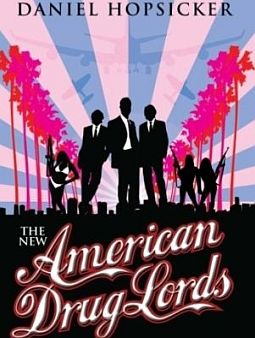 When terrorist pilots Mohamed Atta, Marwan Al-Shehhi and Siad Al-Jarrah spent the last six months of the year 2000 practicing “touch-and-go’s” at the Venice Municipal Airport, they were sharing the runways with a second clandestine operation which has gone unmentioned until now.
When terrorist pilots Mohamed Atta, Marwan Al-Shehhi and Siad Al-Jarrah spent the last six months of the year 2000 practicing “touch-and-go’s” at the Venice Municipal Airport, they were sharing the runways with a second clandestine operation which has gone unmentioned until now.
According to The New American Drug Lords, a new 2-hour documentary by investigative journalist Daniel Hopsicker, the second ongoing operation in Venice while terrorists took flight training there was a Drug Trafficking Organization (DTO), with a global reach, and a talent for avoiding publicity.
Among the chilling conclusions of The New American Drug Lords, a new 2-hour documentary by investigative journalist Daniel Hopsicker:
An international drug trafficking network has been operating in Venice since the early 1970’s, when the notorious paramilitary drug trafficking organization known as The Company had a base at the Venice Airport.
Today, the successor to The Company appears to be the major drug trafficking operation an hour up the coast from Venice, at the St. Petersburg-Clearwater Int’l Airport, where two American-registered airplanes took off before being busted in the Yucatan carrying a cumulative total of ten tons of cocaine.
Some wisdom from a true American hero
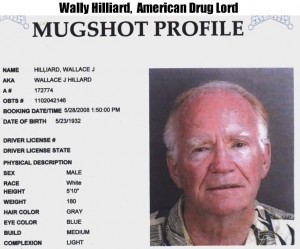 Using “cut-outs” like foreign pilots and Saudi money-man Adnan Khashoggi to provide plausible deniability to the drug network’s U.S. sponsors, the organization was run—or at least received protection from—America’s Central Intelligence Agency, with powerful connections to prominent figures and top financiers in the national Republican Party.
Using “cut-outs” like foreign pilots and Saudi money-man Adnan Khashoggi to provide plausible deniability to the drug network’s U.S. sponsors, the organization was run—or at least received protection from—America’s Central Intelligence Agency, with powerful connections to prominent figures and top financiers in the national Republican Party.
Wally Hilliard’s drug operation in Venice has strong links to the St. Petersburg operation. Many have already been reported. New ones are still surfacing.
The two operations may in fact be the same operation.
Almost 50 years ago, New Orleans District Attorney James Garrison puzzled over what was visible, what was not, and what it meant.
“I knew by now that when a group of individuals gravitated towards one another for no apparent reason," he wrote, in “On the Trail of the Assassins.”
"Or a group of individuals inexplicably headed in the same direction as if drawn by a magnetic field…Or coincidence piled on coincidence too many times…As often as not the shadowy outlines of a covert intelligence operation were somehow becoming visible.”
It made sense then. It makes sense today.
"THAT Company? Yep. That Company."
"I have known since 2004, (I reported it in my book Welcome to Terrorland) that when Mohamed Atta arrived at Huffman Aviation, a Lear jet (N351WB) belonging to the flight school’s owner, Wally Hilliard, was flying weekly drug flights—a total of 39—to Venezuela and back,” says Hopsicker.
"Then, three weeks after Atta’s arrival, Hilliard’s Lear was seized by DEA agents at Orlando Executive Airport who found 43 lbs. of heroin onboard. According to the Orlando Sentinel, it was a Central Florida record."
After the 9/11 killed almost 3000 people, one would think that this incriminating fact alone would be enough to spark a Watergate-style Congressional Inquiry. Alas, the connection between Atta's arrival and Hilliard's drug trafficking has never been remarked on officially.
Today, that seems to have been a case of the less said the better.
The Company’s contingent at the Venice Airport numbered as many as a dozen pilots and associates, and was led by a mysterious Cuban exile, Mario Silverio Villamia, using the alias Frank Guzman, who was named along with Jack Ruby in a 1964 FBI document to the Warren Commission.
Federal prosecutors said The Company ( the subject of Sally Denton’s excellent The Bluegrass Conspiracy, which first raised pointed questions about the involvement of the CIA with the group) was composed of three hundred or so Special Force’s veterans, former military intelligence officers, ex-DEA Agents, policemen, and even judges.
Going "Whole Island" in the Bahamas
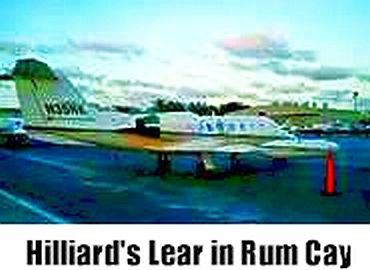 A small mountain of evidence, including eyewitness interviews, financial records, court documents, even the FAA’s Aircraft Registry, is introduced in the course of the two hour show to demonstrate the connections between the planes, the drugs, and the CIA.
A small mountain of evidence, including eyewitness interviews, financial records, court documents, even the FAA’s Aircraft Registry, is introduced in the course of the two hour show to demonstrate the connections between the planes, the drugs, and the CIA.
In addition to ten tons of cocaine which instantly became Lost Luggage, the second SkyWay Aircraft… Larry Peter's SkyWay Aircraft…may be in deeper than was thought.
All by itself Peter's SkyWay sold nine airplanes to cartels that were caught or seized for hauling cocaine.
The silence on this issue by law enforcement and the U.S. Dept of Homeland Security is unnerving.
"If you lived in Medellin and police discovered 1o tons of cocaine, people would be looking around for Pablo Escobar, or, since he's dead, the new Pablo Escobar,” says Hopsicker. "But the drug trafficking operation in St Petersburg has received barely a smattering of unfavorable publicity."
Also in the documentary you'll hear eyewitness testimony about how one of Hilliard’s Lear jets (N35NK) flew three times a week to Rum Cay in the Bahamas in 2003 and 2004 to support an Adnan Khashoggi-led move to take over the island,” said Hopsicker.
“The island was isolated, it has only one policeman.
And it has a brand new 5000-ft runway, making it a perfect place for twin-engine planes and business jets to refuel in discreet privacy enroute to and from South and North America."
That accomplished, the plane began flying CIA extraordinary renditions.
The Big Taboo
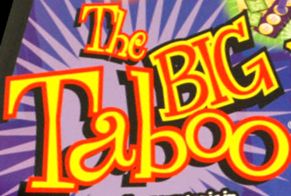 That the connection between Mohamed Atta and Wally Hilliard's drug trafficking has not been aired before the nation is a testament to the power of one of our country’s Big Taboos, which somehow “protects” the American public from having to confront either the existence or identity of their own "home team" in the drug wars.
That the connection between Mohamed Atta and Wally Hilliard's drug trafficking has not been aired before the nation is a testament to the power of one of our country’s Big Taboos, which somehow “protects” the American public from having to confront either the existence or identity of their own "home team" in the drug wars.
The New American Drug Lords would have it no other way. Few believe things will be changing anytime soon.
“Questions about drug trafficking and 9/11 weren’t being encouraged—putting it mildly—back in 2002 & 2003, said Hopsicker.
"When the FBI found out that Amanda Keller, Atta’s erstwhile American girlfriend, had seen him regularly using cocaine, they did nothing to discourage her—again, putting it mildly—from slipping out of town and disappearing, until I was found her hiding in Ohio more than a year later.”
So, who is the Procter & Gamble of the drug business?
How does $300 billion worth of drugs get distributed to retail as efficiently as if it were razor blades or Charmin bathroom tissue each year?
The very question is verboten.
The elephant in the living room escapes exposure through the invocation of a taboo.
Learning from the Tongans
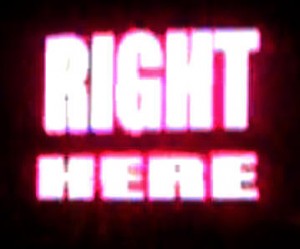 The word ‘taboo’ comes from the South Pacific island of Tonga, meaning “a prohibition against touching, saying, or doing something for fear of immediate harm from a supernatural force,” was brought back to Europe by the legendary Captain Cook.
The word ‘taboo’ comes from the South Pacific island of Tonga, meaning “a prohibition against touching, saying, or doing something for fear of immediate harm from a supernatural force,” was brought back to Europe by the legendary Captain Cook.
While taboos exist in all societies, according to anthropologists say, only the Tongans apparently felt free enough to give it a name.
Tongan taboos can mostly be traced to risks to health and safety, for example, banning foods which can make you sick. Worldwide, most taboos concern avoiding objects and actions considered significant for the maintenance of social order.
The American Drug Lords bear less of a resemblance to the Tony Montana character in “Scarface” than to preppy Yale and Harvard-educated scions of America’s traditional political elite.
This is a fact some might consider injurious to the current social order.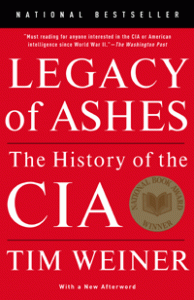
The subject isn’t even raised. Not in polite company. Not in newspapers. Not even in books, except of course, those which reside beyond the Pale, in Conspiracy Land.
Don’t take my word for it.
The power of the taboo against discussing the American role in the global drug trade is painfully visible in a recent book by Tim Weiner, a Pulitzer Prize-winning reporter for the New York Times.
Wiener recently wrote a highly critical history of the CIA, called “Legacy of Ashes.” You can't get much more critical about an institution than to call a history of it "Legacy of Ashes.”
Yet, in a 702-page book, Pulitzer Prize winning reporter Weiner brings up CIA drug trafficking exactly zero times. Not once. Not a single mention.
How odd. Even troglodytes are aware of the many controversies over drug trafficking which have swirled around the CIA in its 60-year history.
Apparently, taboos don’t exist today only in places like Borneo, and the pages of National Geographic.
They exist here, too.
Right here. Right now.
